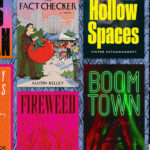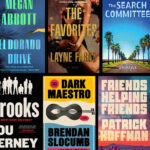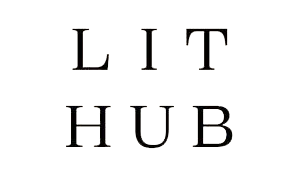Ralph Waldo Emerson once wrote, “Fiction reveals truth that reality obscures.” There’s a unique power to a story that lies close to reality; a “just tomorrow” scenario that can prompt us to wonder how much of this tale might unfold in our own lifetime, and more importantly, why.
When an author draws upon real science—rather than “in a galaxy far, far away—where does the known world end and the imagined one begin? I’ve always found that niche to be particularly delicious, first as a reader, and now as an author. My debut novel, Symbiote, attempts to thread this delicate balance. By weaving scientific plausibility into a thrilling narrative, I wanted to deliver a cautionary tale that would resonate with… let’s call it “unsettling clarity”.
Unlike the distant futures of space operas or post-apocalyptic sagas, Symbiote inhabits a world only a few steps removed from our own. It’s Antarctica in 2028, and the middle of a regional war between the two superpowers of the world: the US and China. In my mind, this proximity serves two vital purposes. First, it brings readers face-to-face with an eerily accessible reality: the seeds of such a crisis might already have been sown in today’s world. Second, grounding the narrative in a somewhat strange yet familiar context can amplify the horror of the situation. Not everyone has experienced Antarctica, but thanks to COVID-19, most every person understands the psychological toll that isolation can have. The closer the crisis is to our lived experience, the more profound its impact can be.
Scientific advancements, environmental stressors, and geopolitical tensions can be inextricably linked. This road has been well-tread by masters of crime and science-fiction. In Jurassic Park, Michael Crichton used cutting-edge genetic science to resurrect dinosaurs, transforming bioengineering research into a harrowing lesson about nature’s unpredictability. Robin Cook’s medical thrillers, such as Coma and Outbreak, delve into the darker sides of biomedical innovation; these are stories about how technology intended for healing can result in unforeseen horrors. As a scientist and futurist in my day-to-day life, the fusing of credible scientific research into suspense and ethical complexity is something I relish.
The narrative approach of grounding extraordinary events in everyday science, and creating a recognizable sliver of reality, has made it easier for me as a reader to slip into the protagonist’s shoes. I can more immediately imagine myself in their situation, instead of suspending disbelief and going along for the ride. Andy Weir’s The Martian is a great example. The protagonist uses actual scientific principles and problem-solving strategies to overcome life-threatening challenges. Weir’s meticulous attention to detail on the minutiae of survival on Mars captured our imagination.
The Martian also illustrates another principle I’ve tried to embody within Symbiote: the power of a real place. Whether Mars or Antarctica, in places that are grounded in reality, the stakes feel higher. This challenges readers to differentiate between what is possible and what is purely speculative. The Antarctic setting of Symbiote serves as a microcosm for larger global issues, but a realistic level of detail and sense of place can amplify the experience of the reader, making even a speculative narrative more entertaining and thought-provoking. Carl Sagan’s Contact explores communication with extraterrestrial intelligence, but a rigorous portrayal of the science behind the search for alien life provides an anchor of realism. When the conceivable and the fantastical are carefully woven together, it both inspires wonder and provokes thoughtful skepticism.
Neal Stephenson’s works, such as Seveneves, take this principle farther. Though his narratives often span centuries, they extrapolate current scientific understanding into speculative futures. The attention to realistic detail—whether in orbital mechanics, genetic engineering, or climatology—echoes a scientific authenticity. And this creates narratives that are both stimulating and suspenseful. These stories remind us that the seeds of our future are being sown in the laboratories and boardrooms of today.
It’s tricky to intertwine fact with fiction without lecturing. It’s even trickier to preserve both the thrilling and the thought-provoking. Rather than resorting to vague or mystical explanations, authors like Weir, Cook, Sagan and Crichton use precise scientific language to transform an abstract threat into a concrete, terrifying possibility. The ability to marry hard science with narrative urgency is a hallmark of “near-future” science fiction, and is one I’ve always found wonderfully intriguing.
Realistic science fiction often walks a tightrope between scientific advancement and ethical responsibility. In Symbiote, I’ve tried to explore not only the terrifying possibilities of biological manipulation, but also touch on the moral quandaries that arise when science is weaponized. There are profound questions implicit about the limits of human ambition, and the perils of playing God. This ethical tension is a central theme in the works of Crichton and Cook, who frequently questioned whether scientific progress, in its relentless pursuit of knowledge, might inadvertently unleash forces beyond our control.
At the heart of Symbiote lies a question that has long intrigued readers of realistic science fiction: How much of this is science fiction, and how much is science fact? How close are we to a future where the lines between the two are indistinguishable? In the book, the parasite, an “extremophile” version of naturally occurring organisms blurs the line between speculative biology and empirical science. It’s a plausible extension of current trends in environmental degradation, military conflict, and scientific ambition, rooted in ongoing Antarctic biological research.
Emerson’s insight—that fiction can reveal truths that reality obscures—finds fresh resonance in works of “near-future” fiction. These narratives not only entertain but also serve as both cautionary tales. They urge us to navigate the frontier of innovation with both curiosity and responsibility. They serve as a reminder that our future, as depicted in these stories, is shaped by the choices we make today. Science can be more than just a backdrop to the drama. Indeed, science can be the engine that drives the narrative, challenging readers to consider the ethical and practical implications of our relentless pursuit of knowledge.
***


















